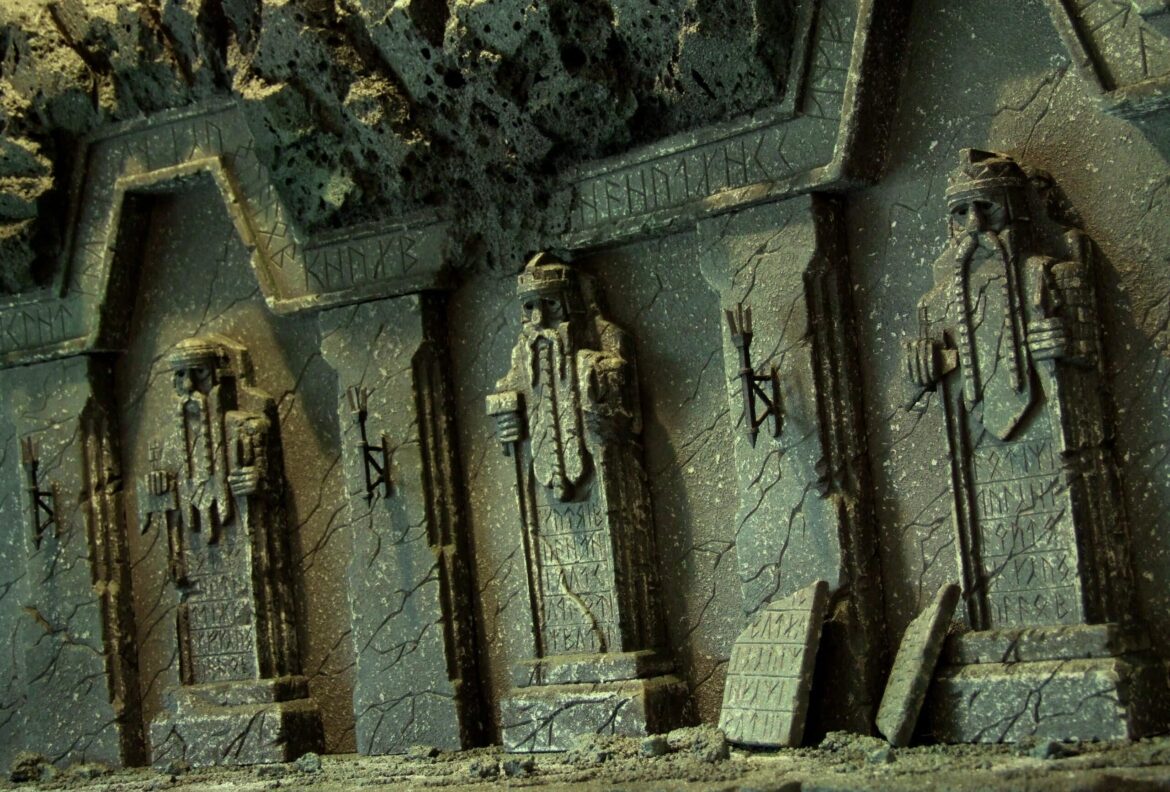Discover the fascinating world of the Mines of Moria, also known as Khazad-dûm, from “The Lord of the Rings.” Learn all about their origins, significance, architectural wonders, and the dramatic events that took place in their depths.
Moria and Khazad-dûm: Discover the legendary dwarf city in Middle-earth
The Mines of Moria, known as Khazad-dûm, are a central location in J.R.R. Tolkien’s “The Lord of the Rings.” This underground dwarf city is impressive not only for its size, but also for its rich history and culture. But what makes Moria such an important place in fantasy literature?
- Moria, also known as Khazad-dûm, is a huge underground city built by the dwarves. It is the largest and most magnificent dwarf kingdom in Middle-earth, founded by Durin the Immortal. The city extends over several levels and is connected by extensive halls, tunnels, and mines.
- Moria plays a central role in the story of “The Lord of the Rings.” The Fellowship enters the mines on their way to Mordor to find a safe passage across the Misty Mountains. Here they are confronted with the remnants of the once glorious Dwarf kingdom and must face various dangers, including the dangerous Balrog.
- Khazad-dûm was once famous for its inexhaustible deposits of mithril, an extremely valuable metal that is harder than steel and lighter than a feather. This metal was mined and traded by the dwarves, making Moria a prosperous and powerful city. However, the mining of mithril ultimately led to the city’s downfall, as it awakened the sleeping Balrog.
- The architecture of Moria is a testament to dwarven craftsmanship. Huge halls, carved stone pillars, and ornate bridges testify to the dwarves’ ability to shape stone and create imposing structures. Despite the darkness that now reigns in the corridors, the splendor of the buildings remains palpable, giving a glimpse of the city’s former greatness.
The History of Khazad-dûm: Rise, Glory, and Fall of the Dwarven City
Moria has a rich and complex history, ranging from times of prosperity to catastrophe. This history is closely linked to the fate of the dwarves and their quest for wealth.
- Khazad-dûm was founded during the first ages by Durin I, also known as Durin the Immortal. He discovered the caves of the Misty Mountains and recognized their potential for establishing a thriving empire. Under his rule, the city grew and flourished thanks to trade with other peoples, especially the Elves of Eregion.
- During the Second Age, Moria reached its peak. The dwarves used their advanced mining techniques to delve deeper into the mountain and extract valuable metals such as mithril. However, this wealth also attracted envy and led to conflicts with neighboring kingdoms.
- The decline of Moria began when the dwarves dug too deep in their greed for mithril and unwittingly awakened a balrog, an ancient and powerful demonic creature. The Balrog, known as Durin’s Bane, brought death and destruction to the city. The dwarves were forced to leave their home, and Moria became a dangerous place occupied by orcs and other creatures.
- Despite the dangers, Moria was repeatedly visited by adventurers and treasure hunters. Some sought the legendary mithril, others wanted to uncover the secrets of the lost dwarf city. These attempts often ended in tragedy, as threats always lurked in the dark depths of Moria.
Symbolism of Moria: What Khazad-dûm teaches us about power and loss
The significance of Moria in literature goes beyond its role in “The Lord of the Rings.” It symbolizes the themes of power, greed, and loss that Tolkien explores in his works.
- Moria is a symbol of the transience of power and wealth. The dwarves of Khazad-dûm were once powerful and prosperous, but their greed led to their downfall. This reflects a central theme in Tolkien’s work: that even the greatest empires can fall when driven by greed.
- The darkness of Moria represents the unknown and often dangerous paths one must take to gain knowledge and wisdom. The Fellowship’s journey through Moria symbolizes the challenges and trials that everyone must face in order to emerge stronger in the end.
- The architecture of Moria, with its impressive halls and hidden depths, is an expression of the dwarves’ passion for craftsmanship and artistry. This passion contrasts with the destructive forces that ultimately sealed the fate of the dwarves.
- Ultimately, Moria represents the idea of a lost paradise. It was once a place of light and joy before it fell into darkness and despair. This transformation reminds us that even the brightest places can be overshadowed by darkness if we are not vigilant.

